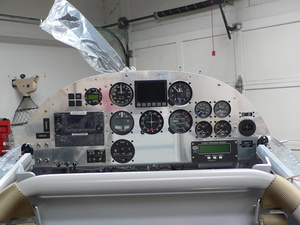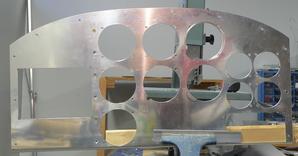Site Software Update Finished
- Details
- Written by Kevin Horton
- Hits: 3582
I've finished a long overdue update to the Geeklog software that runs this web site.
Known Problems:
- Some of the site stats functions have not been updated yet. Definitely a low priority item to finish.
Changes:
- You can click on images in articles posted from this date forward to see a larger version.
- The default colour scheme, (a.k.a. theme) has changed, as the one I was using hasn't been updated to be compatible with the latest software update.
- The forum has been disabled for now. The forum was hardly used, so I'll probably leave it out, to reduce the amount of time it takes to do this and future updates.
- Anonymous comments have been enabled again, as the software upgrade supposedly has a filter to block IP addresses that were posting links to porn via comments.
- I've enabled news feeds - see the block at the top right. I'm still messing around with the options a bit, so the amount of content won't stabilize for awhile.
- The search function is improved, with more options to narrow down the results found.
If you find anything that doesn't seem to be working right, please note it in a comment to this item.
Replacement Instrument Panel
- Details
- Written by Kevin Horton
- Hits: 3076
I had great plans to work on the project yesterday, but life intervened. Terry discovered some water coming into the basement in the morning, and we spent most of the day fighting that battle. It was unseasonably warm here, with a lot of melting going on. It turns out that a bunch of leaves had blocked one downspout, so the gutters had backed up and frozen earlier in the winter. A large amount of water was coming off a valley in the roof, going over the frozen gutter, and pooling in a low spot on the driveway next to the house. We spent hours getting the ice out of the gutters, clearing out the blockage in the downspout, making a trench in the ice on the driveway to drain the water away, and then vacuuming up the water in the basement. I had cleaned the leaves out of the gutters early in the fall, but I was on the road a lot near the end of fall, and I didn't get around to cleaning the gutters again. Lesson learned. We'll also have to do some work next summer to sort out the grade around some parts of the house.
 Today I finally finished the work on the replacement instrument panel, and put it in the aircraft to confirm that everything was OK. It turned out very nice, so now I can pull it and the fixed portions of the panel out and get them painted.
Today I finally finished the work on the replacement instrument panel, and put it in the aircraft to confirm that everything was OK. It turned out very nice, so now I can pull it and the fixed portions of the panel out and get them painted.
Pitch Axis Autopilot Ideas
- Details
- Written by Kevin Horton
- Hits: 5461
I had a bunch of time over the holidays at my parents house to think, and my mind drifted to adding pitch axis autopilot functions. There are several add-on pitch axis options on the market, but I'm interested in something cheaper and lighter than a traditional pitch servo.
An E-Racer builder came up with an altitude hold solution that used a pressure transducer feeding info to a little microprocessor that then fed commands to the pitch trim to hold altitude. At one point he made and sold the EZ-Trim, but now he has put the plans up for download so you can make your own. More info on how it works.
At first glance, a system that uses pitch trim shouldn't work as well as a system that has a pitch servo driving the elevator. But, there have been quite a few larger aircraft over the years that used flight control systems where the cockpit controls were connected to tabs on the elevator, aileron and rudder, and the main control surfaces were free floating. The pilot's inputs would move the tab on the back of the surface, and the force created by the tab would cause the whole control surface to move. I've never flown such an aircraft, but this type of control system was moderately successful on larger aircraft where the forces to move the control surfaces would be too high for conventional flight controls, and the designer didn't want the complication of hydraulically boosted flight controls.
I realized that I might be able to use the altitude serial data output by the Dynon EFIS instead of using a separate pressure transducer. This would help keep the cost down. Then I realized that the Dynon EFIS also transmitted airspeed and pitch attitude data, so this opened the door to possibly creating a more sophisticated pitch axis autopilot with several possible modes:
- altitude hold,
- airspeed hold,
- vertical speed hold, and
- pitch attitude hold.
The pitch attitude info could be used in a couple of ways to improve performance. I could use it to avoid large pitch attitude changes when trying to chase airspeed or altitude. Or I could actually make the basic inner loop a pitch attitude hold function, and then have the other modes drive an outer loop which would simply adjust the current pitch attitude target as required to follow the outer loop's airspeed or altitude target.
If I add some means to input target values, I could also have:
- selected altitude capture,
- selected airspeed capture,
- selected vertical speed capture, and
- selected pitch attitude capture.
Of these additional possible modes, the only one of great interest would be selected altitude capture.
Developing the control laws would be a major effort. I would probably start by creating a simplified pitch axis model to run on a computer, so I could mess around with different types of control laws. Once I had learned what types of control laws were the most robust, I would then move to flight testing to establish the control law gains. Hopefully I could find a set of gains that will work at both forward and aft CG - otherwise I would need to add a CG switch on the unit to allow me to select between two different gain schedules. Or perhaps a potentiometer to allow the most important gain to be varied in flight. I would need a more powerful microprocessor, with more memory than the Parallax Basic Stamp II CPU that Cliff Cady used. He mentions several other possible CPUs.
This type of system adds new possibilities for a pitch trim runaway, so I would probably want to come up with a separate monitor circuit that interrupted power to the pitch trim if some set of conditions was tripped. The simplest condition would be to cut pitch trim power if there was a trim input that lasted longer than X seconds. This would also provide protection against other failures in the main pitch trim system, outside the pitch axis autopilot. The monitor would reset if the trim command went away for more than Y seconds, so that if the pilot triggered the monitor with a too long trim command, he could release the trim switch for short period, and the trim would become available again.
Anyway, I won't put any real work into a pitch axis autopilot for now. I'll wait until the get the plane flying, then I'll start messing around to see what I can come up with. If I come up with anything workable I'll post plans.
Site Software Update Coming
- Details
- Written by Kevin Horton
- Hits: 3435
We got back late yesterday from a week in Nova Scotia visiting my folks. It was great to spend some time with them. Today was spent doing a long list of chores. Tomorrow I should attack the project again.
I hope to update the software that runs the web site sometime in the next week. If all goes well, the site will be off line for a couple of hours. If things go poorly, it may be off line for quite a while. I've got the upgraded software running fine on my laptop, except for the forum. The forum will probably be off line for a long period, while I wait for an upgrade that is compatible with the latest Geeklog software. The new software has an anti-spam plug-in, so I'll re-enable comments from anonymous posters once the upgrade is complete. The site look will change, as the theme I'm using hasn't been updated to work with the new software. I'm moving back to one of the default themes, as that means less work on future upgrades.
Back home, winter arrived
- Details
- Written by Kevin Horton
- Hits: 3487
I got back late yesterday from a very unproductive trip to Wichita. We had quite a winter storm on Friday night and Saturday morning. It really looks like winter out there. :(
I ran into RV-8 builder Mark Richardson in the airport on Monday morning - he had gotten up very early to catch a flight with Northwest, but the flight was canceled, and he was re-booked on a flight several hours later. I thought "Sure glad I'm not flying Northwest.", as I spent several days stuck in Detroit several years ago.
But, my luck was no better than Mark's. My Air Canada flight to Chicago was canceled, and I got re-booked to Wichita on NW via Detroit and Minneapolis. Things were looking OK until the flight from Detroit to Minneapolis had a 45 minute ground hold, then we spent another 30 minutes in a holding pattern before landing. I missed the last flight to Green Bay by about two minutes.
There were no seats left on the morning flight to Green Bay on Tuesday, so I was re-booked to Wichita via Memphis. It took me four flights and over 24 hours to get to Wichita from Ottawa - a record that I hope to never break.
There wasn't enough time left on Tuesday after I arrived to do the review meetings and the planned flight, so the flight was canceled. We did a 6.2 hour day and night VMC famil flight on Wednesday, cycling four different pilots through the left seat in day and night conditions. We didn't get any real Enhanced Vision System (EVS) testing done, but we needed to get everyone back in the groove on the Global Express and the EVS. Thursday we headed for Rochester, MN to do some EVS testing in the weather, but we had an aircraft snag that meant we had to cut the flight short without accomplishing much. Friday we got the aircraft in mid afternoon, but all the suitable weather for EVS testing was a three-hour transit away - we weren't prepared to invest six hours of transit time after getting airborne later in the afternoon. Everyone had other commitments the following week, so we headed home on Saturday.
I spent today taking care of myriad odds and ends. The only project related thing I did was to finally put the temporary weather stripping around the garage door to keep the cold winter winds out. I hope to be home most of this week, so I'll continue on with the instrument panel work.
I did manage to get a bit of time to work on the POH in the hotel, so I've uploaded a newer version.
Instrument Panel Progress
- Details
- Written by Kevin Horton
- Hits: 3176
 I had a couple of days in Montreal this week, and my brother was here for dinner on another night, but I managed to get a few hours to work on the project this week. I cut the holes for the flight and engine instruments, and made the cutouts needed for the bumps on the altimeter and CDI. I've still got to make the cutout needed for the bump on the VSI.
I had a couple of days in Montreal this week, and my brother was here for dinner on another night, but I managed to get a few hours to work on the project this week. I cut the holes for the flight and engine instruments, and made the cutouts needed for the bumps on the altimeter and CDI. I've still got to make the cutout needed for the bump on the VSI.
I'm heading to Wichita tomorrow for a week of Global Express Enhanced Visions System (EVS) (info from Thales). The EVS has an IR camera that displays an image in the Head Up Display. The IR camera can see further than the pilot in some types of weather, and is intended to allow landings in worse visibility than is possible using the naked eye. We've got several weeks of testing to do, as we need to find very poor visibility in different types of weather (rain, fog, snow, etc) in day and night conditions. Fortunately the Global Express has long legs, and can cruise at up to Mach 0.88 so we can get to wherever the weather is bad fairly quickly.
